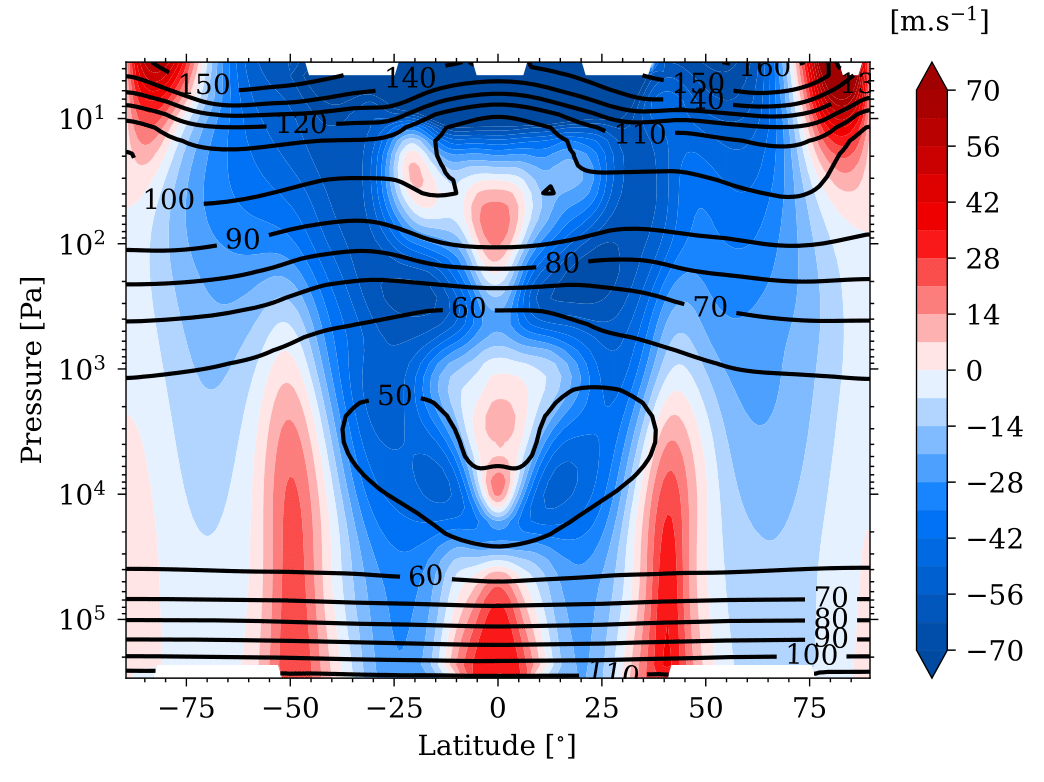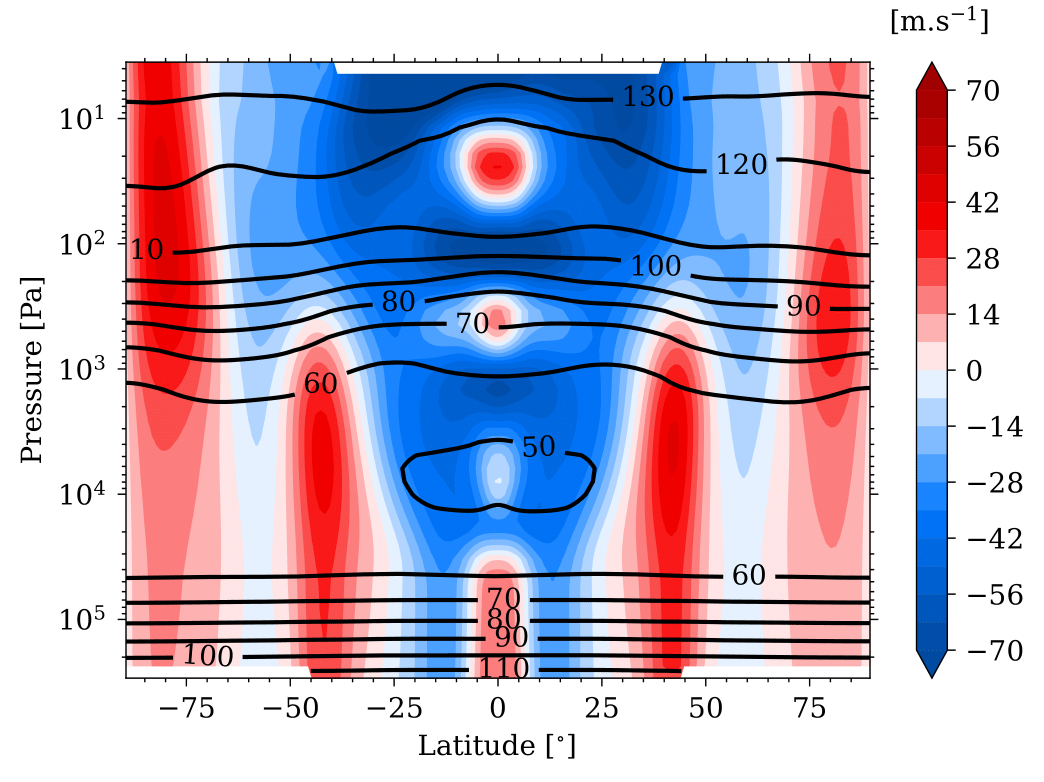Zonal and meridional circulation on Uranus and Neptune reproduced by a Global Climate Model
- 1Université de Bordeaux, LAB, Pessac, France (gwenael.milcareck@u-bordeaux.fr)
- 2LMD/IPSL, Sorbonne Université, Paris, France
- 3LESIA, Observatoire de Paris, Meudon, France
- 4LATMOS/IPSL, Université de Versailles Saint-Quentin-en-Yvelines, Guyancourt, France
- 5LISA, Université Paris-Est Créteil, Créteil, France
Flyby of Uranus and Neptune by Voyager 2 in 1986 and 1989 have shown intense zonal circulation and unexpected meteorological activity. Characterized by a prograde jet at mid-latitude in each hemisphere and a retrograde jet centred on the equator, the zonal structure of the wind is similar on these two planets despite very different seasonal radiative forcing. Understanding atmospheric circulation in gas and ice giant planets, with comparative planetology aspects that could be relevant to the exoplanet community is one of the major current challenges in the physics of planetary atmospheres.
To reproduce the zonal jets as well as the strong meteorological activity on Uranus and Neptune, 1° resolution numerical simulations have been performed with a Global Climate Model (GCM) named DYNAMICO Ice Giants Planetary Climate Model.
According to our GCM, the zonal wind has a complex structure in altitude on Uranus and Neptune. At the tropopause level (100 hPa), the zonal-mean zonal wind speed averaged over the whole year shows a retrograde jet centred near the equator and a prograde jet at mid-latitudes in each hemisphere on both planets (figure 1 and 2). Although the structure of the jets is qualitatively similar to that observed, the intensity of the jets is much less intense than the values obtained by cloud tracking since the Voyager 2 era. On Neptune, the equatorial retrograde jet observed at -400 m/s only reaches around -50 m/s in our simulations. We also note that the simulated prograde jets are narrower than those observed and that they are incorrectly positioned in latitude. On both planets (particularly Uranus), an equatorial migration of the jets also takes place in our simulations.
The low intensity of the simulated jets is very similar to that obtained by previous simulations. This similarity between simulations indicates that one or more forcings are missing from these models. One of the forcings currently under investigation is the tropospheric methane meridional gradient which can influence the zonal wind and the thermal structure.
At the same time, we identified an equatorial oscillation on Uranus with a period of one year on average. Temperature anomalies of ~5 to 10 K are observed in connection with this oscillation. On Uranus, the vertical temperature profile obtained looks similar to that obtained from observations at the equator. We identify the local extrema observed on this profile as being possibly the temperature anomalies caused by the equatorial oscillation.
The meridional thermal structure at higher latitudes is very different from that obtained with a radiative-convective model. Seasonal variations are greatly attenuated by atmospheric dynamics. The meridional and temporal variations observed on Neptune are qualitatively similar to those simulated by our model.
A meridional circulation has been identified using the Transformed (TEM) and Classical Eulerian Mean (CEM) formalism. In the classical case, a circulation very similar to that deduced from the observations has been reproduced on Uranus. It takes the form of a subsidence at the equator and poles and an upwelling at mid-latitudes. But on Neptune, no coherent circulation cell has been identified using this formalism. In the TEM case, only one direct thermal circulation cell is present on each hemisphere for both planets.

Figure 1: Vertical cross-section of the zonal-mean zonal wind speed averaged over one year on Uranus. The black lines represent the isotherms.

Figure 2: Same as figure 1 but for Neptune.
How to cite: Milcareck, G., Guerlet, S., Leconte, J., Montmessin, F., Spiga, A., Bardet, D., and Millour, E.: Zonal and meridional circulation on Uranus and Neptune reproduced by a Global Climate Model, Europlanet Science Congress 2024, Berlin, Germany, 8–13 Sep 2024, EPSC2024-859, https://doi.org/10.5194/epsc2024-859, 2024.